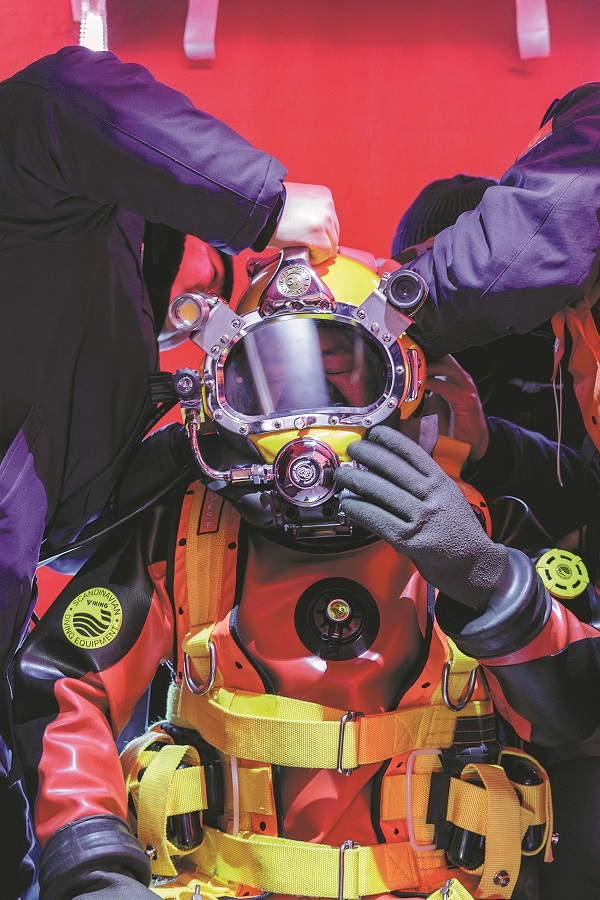Water rescue team sharpens its ice-diving skills
Little-heralded outfit braves aquatic depths in Beijing for intensive training


'Talking' underwater
Han Hongliang, a 29-year-old senior diver from Suqian, Jiangsu province, was responsible for ice safety during this year's ice-diving training session in northeastern Beijing. He said that a drag signal made via a yellow hemp rope is the most important "language" used by ice divers in deep water.
"For instance, when I pull the rope slightly, I'm signaling to the diver to check if everything is OK underwater. When the diver tugs the rope in response, I understand that everything is going well beneath the ice," he said.
"However, if the diver continuously pulls the rope, it indicates that there may be an underwater emergency. This suggests that the diver is experiencing difficulties or facing an emergency from which they cannot easily escape."
Part of the divers' training involves each team member becoming aware of their responsibilities, Han said.
"When two of our teammates are diving, they are each secured by a yellow hemp rope to their signal buddies on the ice's surface, who manage the line. The third diver serves as a standby diver, fully suited up and ready to intervene at any sign of trouble from below."
This simple yet effective system of rope signals has become a vital means of communication between the divers and their colleagues on the ice.
Zhao, the chief diving instructor, said the duration of each ice-diving training session is meticulously calculated to ensure the safety and health of every diver.
"Generally speaking, underwater operations typically last about 20 minutes," said Zhao. "If a diver has not resurfaced after this time under the ice, the signal firefighter will use rope tugs to inquire about the diver's physical condition, sending him a signal and asking if he feels all right underwater.
"The diver can pull back on the rope to indicate that he is fine," he said. "But only the diver himself truly knows what is exactly taking place underwater."
All diving equipment must be treated with antifreeze to ensure it works in icy water.
"Unexpected things happen during ice diving," Zhao said. "Your air supply might be cut off due to your regulator freezing in the cold water, or you could get the shivers, or you might become entangled in a large fishing net and struggle to free yourself.
"In our training process, we simulate all possible extreme conditions that come to mind, ensuring that our firefighters will not panic when they dive to save people in real situations and have ways to deal with the complications."
During this year's training session, Lu Bingxin, 25, from Tai'an, Shandong, in addition to carrying a 15-kilogram air tank, was weighted down with 12 kg of lead to help offset the buoyancy of his suit.
He was teamed with diver Hu Yazhuo, 29, from Shenyang, Liaoning province, and they both slid through the ice hole into the water. The firefighters who acted as signal men held the ropes connected to them tightly as they went in search of the target object.
Lu and Hu later said rope signals were constantly made during the search and when they were trying to return to the exit hole.
























